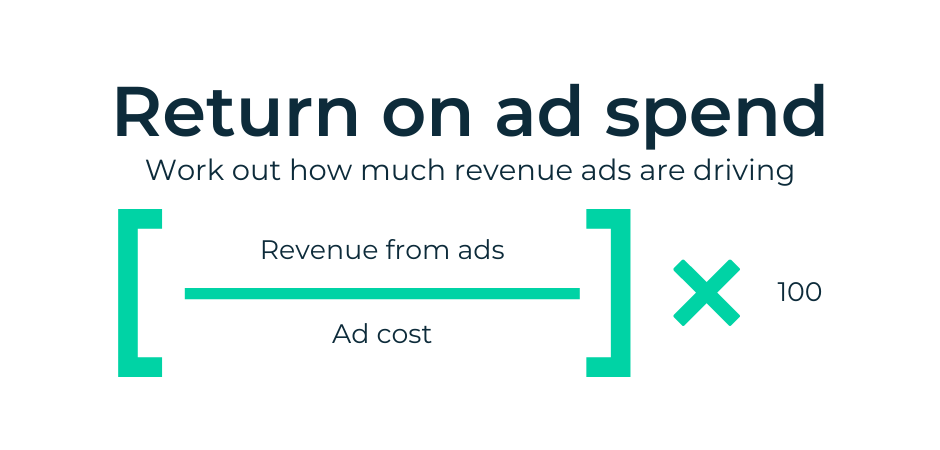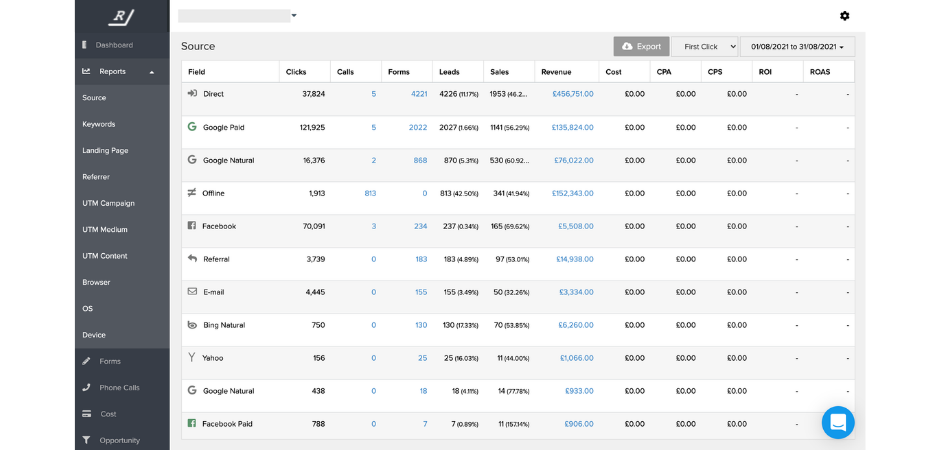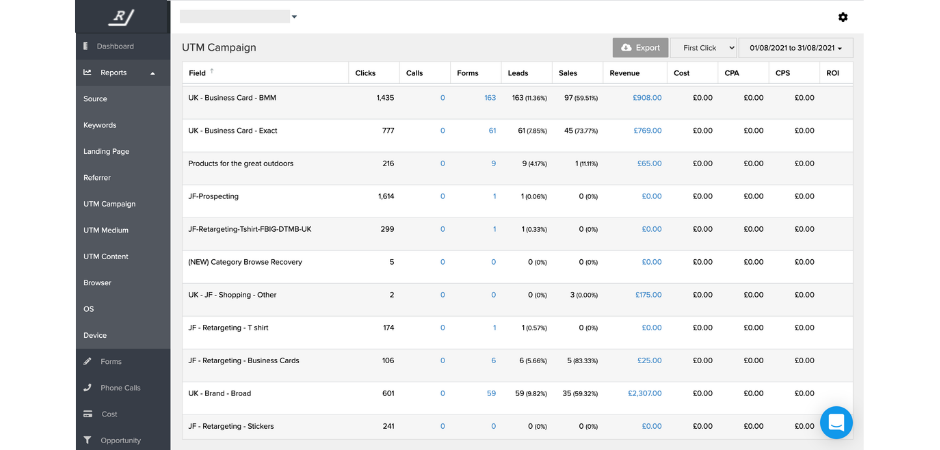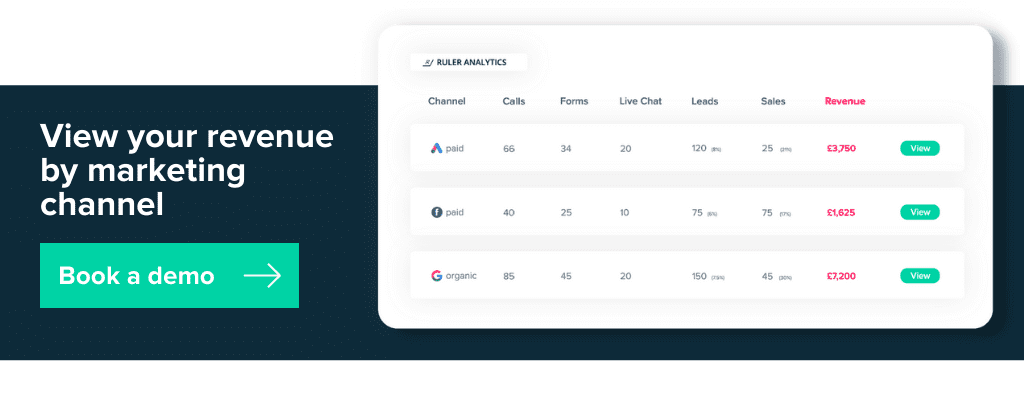If you’re using paid advertising to drive leads and sales, then you need to understand what return your budget brings in. In this blog, we’ll show you how you can improve your return on ad spend and get more bang for your buck.
We found that just 17% of marketers find proving ROAS a challenge.
That’s not a huge number. And yet, we see our customers grow ROAS 23%. If there’s this much room for growth, then something must be going wrong when it comes to proving and optimising paid advertising.
Keep reading to learn more about:
ROAS, or return on ad spend, is a marketing metric that is used to measure the performance of paid campaigns.
Related: What is ROAS and how to calculate it
It allows marketers to prove exactly how much revenue they’re generating based on how much they’ve invested in paid ads.
ROAS is a great statistic to keep track of as it can quickly illuminate which channels, campaigns and ads are working hardest to drive sales and growth.

ROAS is important because it allows businesses to evaluate the effectiveness of their paid advertising campaigns on a holistic and granular level.
Related: Read more on why return on ad spend is so important
But there’s a data discrepancy when it comes to calculating ROAS.
We found that 54% of marketers use PPC regularly as part of their marketing strategy, while 48% use paid social. That’s half of all marketers using some form of paid media on a regular basis to drive business.
We also found that 25% of those using paid social struggled to track conversions, while 21% of marketers using PPC had the same issues on that channel.
And these stats are hardly surprising.
Let’s look at the conversion types marketers use.
84% use form submissions, 50% use calls and 33% use live chat. But where it gets interesting is how marketers track these conversion types.
We found that 36% of marketers struggle to track form submissions while 62% of those who use phone calls struggled to track them and 53% of those using live chat struggle to track these conversations and conversions.
That’s a huge proportion of marketers who can’t link their paid leads to their closed sales.
If you want to improve your ROAS, then you’ve come to the right place. Ruler Analytics is a marketing attribution tool and is the perfect solution to proving and improving your return on ad spend.
✏️ Note
If you don’t already know, Ruler connects your website, your CRM and your analytics tools so that you can connect the dots between your website visitors, your leads and your sales. It gives you a full view of what’s driving clicks, leads and revenue.
You can read more about how Ruler attributes revenue to your marketing here. Let’s delve into how Ruler can help you improve your return on ad spend.
Ruler has a whole host of dashboards and data that make reporting on your marketing easy. Since Ruler connects your site to your CRM and analytics, it can close the data gap between clicks, leads and sales.
It means when users click on your paid ad and convert weeks, or months later, you can still see that paid influenced their purchase.

If you head to the source report in Ruler, you can see exactly how much revenue each channel has generated within a set timeframe.
Then you can work out your return on ad spend by calculating your cost compared to your revenue.
🚀 Pro Tip
Worried about iOS affecting your performance?
Read our guide to the iOS 14.5 update and how you can best prepare as a paid marketer. Once you can prove what works, you’re in a better position to add more budget to your campaigns, optimise your ads and prove marketing’s impact.
The most obvious way to improve your return on ad spend is to add more budget to what’s already working.
With Ruler, that’s easy.
Log in to Ruler and view the source report to get an idea of if PPC is generating more revenue, or if paid social is.
And then, get granular.
Access the UTM reports for campaign, medium and content. Critically assess one advert against another to see which is driving more revenue compared to the cost invested.
Once you know what’s working, turn what isn’t off and add that budget to what is.
This will help you to skyrocket your ROAS.

“Return on investment, or return on ad spend can be difficult to track given it can be hard to link leads from PPC to closed sales. Ruler has allowed us to streamline our entire digital dashboard by allowing us to track goals more relevant to our business.”
“We have been able to increase our ROAS by 23% across our digital landscape. This has been achieved as Ruler solved a key pain point which was simply evidencing which digital channels were working, which needed optimising and which we no longer should invest budget into.”
Stephen Taylor, Head of Digital at Totalmobile
Remember, marketing attribution can be the missing link to drive your business to the next level.
📈 Pro Tip
Not sure exactly what marketing attribution is or how it can solve your problems? Read our complete guide to marketing attribution to learn more about what it is, how it works and the models you can use to link marketing to your bottom line.
In the three UTM reports, you’ll be able to break down your ads by campaign, medium and content.
First, head to the UTM Campaign report.

👉 Book a demo to see this report and more, in action
Here, you’ll be able to see how your campaigns are performing on an individual basis. Take a look at how many clicks, leads and sales you get from each.
Identify which ones drive clicks-only. This usually highlights that while your ad is clickable, the user is not seeing the content they expect when they land on your website.
This could mean that you’re targeting the wrong audience or the wrong keyword.
Related: How to get more PPC leads
Adapt these and see how the performance of your campaigns changes (even better, A/B test them).
If a certain campaign is consistently driving clicks but low leads and revenue, then turn it off. It’s a waste of budget that isn’t resulting in real results.
While ads that drive clicks but no leads or sales indicate poor targeting, ads that drive leads but no sales could indicate poor sales performance or low-quality leads.
If you find, when assessing the performance of your paid adverts, that you’re converting leads but that they’re not progressing into sales, then you need to ask yourself these questions:
Are these leads high-quality? Speak to your sales team to see what leads passed from marketing are like and if they’re a good fit for your business. No matter how good your sales reps are, they can’t sell a product to someone who doesn’t want or need it.
Are sales pursuing marketing leads? Due to poor alignment between sales and marketing, some leads can be left forgotten hence the low conversion rate.
Once you know the answers to these questions, you’ll be in a better position to make a decision.
If your leads aren’t high-quality, then it’s back to the drawing board. Your ad placement isn’t right if it’s not reaching the right people. Remember to continuously test your targeting and use insights to find the perfect niche.
If your sales team aren’t pursuing your leads then you need to work on your sales and marketing alignment.
Related: Complete guide to sales and marketing alignment
Both of these steps will help you better improve your ROAS and get critical with your paid ads.
With the right data analytics tool in place, you can get the insights you need to start making data-driven decisions.
A tool like Ruler Analytics can help you to connect the dots between your site, your leads and your revenue. With it, you’ll be armed with data that can help you prove and improve your ROAS and ultimately drive more business at a lower cost.
Read exactly why you need Ruler, or book a demo to get started with marketing attribution. Start optimising your paid ads and radicalise how you spend online.
